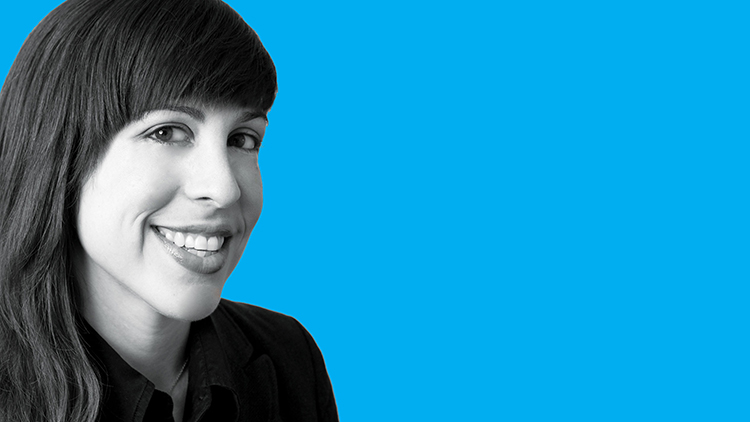When you see the name Leonardo da Vinci, what springs into your mind? Leonardo’s paintings or his inventions? His Vitruvian Man or mirror-image cursive? Don’t forget about his breakthroughs in botany, architecture, and geometry. Leonardo is the quintessential Renaissance Man, a polymath with artistic and engineering talents that crisscrossed the map. Imagine a garden party on a balmy Italian night. Someone ambles up to Leonardo and asks, “What do you do?” How on earth would he have answered that question?

Margot Douaihy, codec cognoscenti, New Wave fan, writer/editor, vintage audio enthusiast, sleuth novelist
I would never compare myself to the great Leonardo, but, like the Italian polymath, my deep curiosity about this spinning world inspires me to pursue diverse disciplines. I’m a certified yoga teacher with a CEDIA Boot Camp under her belt. Yesterday morning I edited an H.264 white paper and at night I finished a song lyric. I find incredible beauty in an algorithm and in an abstract painting by Rothko. Is it left-brain/right-brain thinking? Humanism? I honestly don’t care. For me, it’s about chasing your passions down every alley. It’s about staying open minded. Subject expertise is important, and the more investment in your specialty, the better. Subject matter experts are always assets. But you never know what new idea will ignite the imagination and help solve problems more creatively. I want to make surprising connections. Don’t you?
As AI and machine learning seep more deeply into our everyday tasks, it’s our creative skills that will give us the edge. To prepare for the inevitable changes in AV technology and the business landscape, look to The World Economic Forum’s report “The Future of Jobs.” This research suggests that more than one-third of skills that are considered important by today’s workforce will have changed by 2020. According to the report, “The Fourth Industrial Revolution will have brought us advanced robotics and autonomous transport, artificial intelligence and machine learning, advanced materials, biotechnology and genomics.” Indeed, what will help me, you, and the workers of tomorrow stand out won’t be technical acumen. Creative dexterity, agile problem-solving, and emotional intelligence will differentiate us.
These concepts, framed by “design thinking for AV,” anchored AVIXA’s remarkable TIDE Conference during February’s Integrated Systems Europe event. I also hope this spirit of creativity resonates in this edition of AV Technology. UNLV’s dynamic AV team shares their pragmatic yet unique approach to 4K (page 14, “The Path to 4K”). We showcase bright new ideas in LED, OLED, and MicroLED in “Testing LED’s Mettle” on page 18. On page 28, we get in touch with interactive digital signage.
To all the polymaths reading: how has cross-pollination made you a sharper thinker and more inspiring team member? Send your polymath dispatch to mdouaihy@nbmedia.com. Tweet a haiku or line of code to @AVTechnologyMag.

